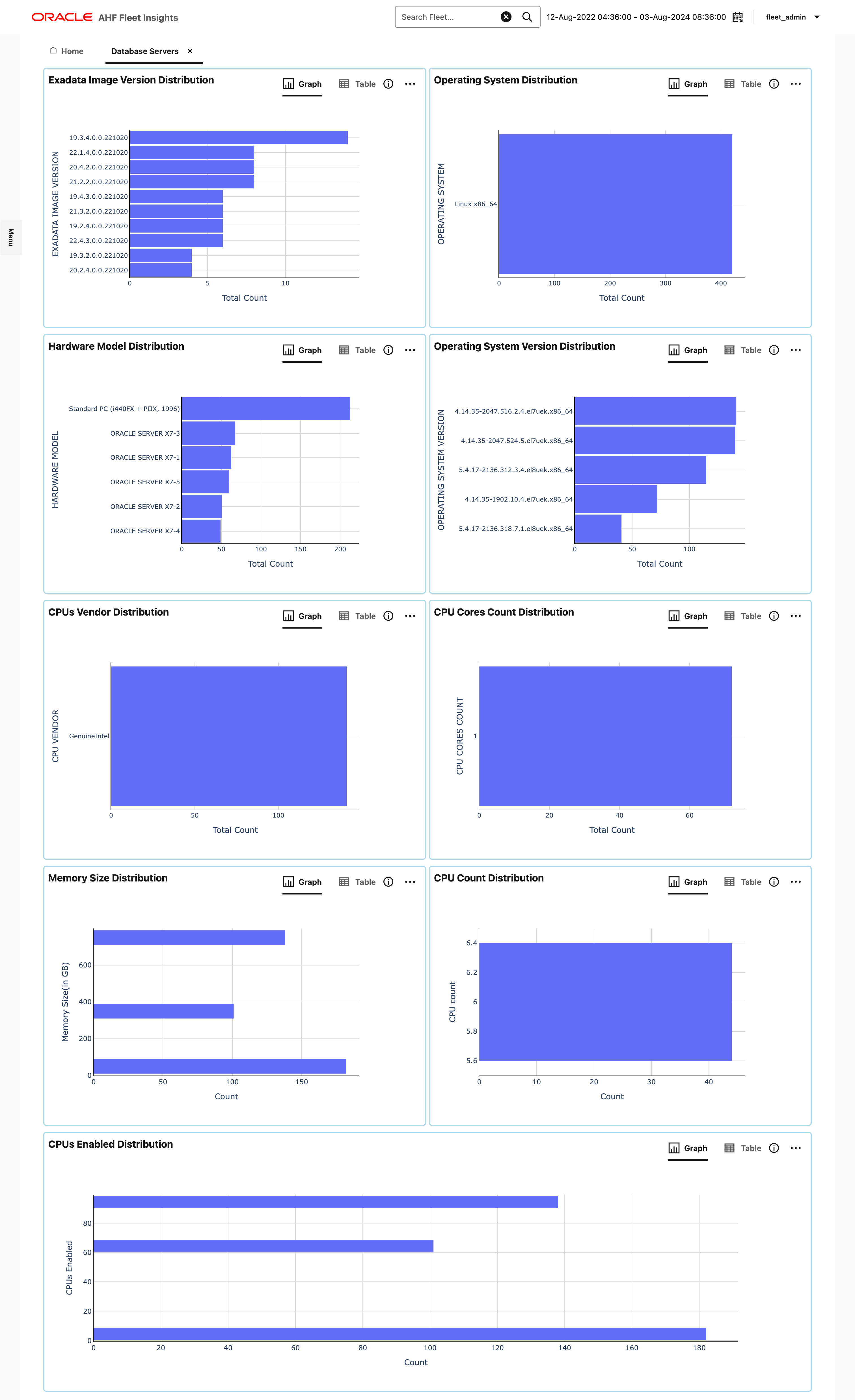3.2.2.3 Database Servers
Figure 3-9 Database Servers

- Know the distribution of fleet across various database server configurations
- Identify the most commonly used operating system/version across your database servers
- Identify the most common range of memory sizes across your database servers
Parent topic: Fleet Topology
3.2.2.3.1 Know the distribution of fleet across various database server configurations
Purpose: Understand the distribution of your fleet across different configurations of database servers, such as Exadata Image Version and Hardware Model Distribution. This insight helps in making informed decisions about:
- Patch and Bug Prioritization: Target updates and fixes based on the configuration spread within your fleet.
- Capacity Planning: Assess current capacity and plan for future needs according to the distribution.
- Fault Tolerance: Identify potential vulnerabilities and enhance fault tolerance across configurations.
- Resource Allocation: Optimize resource distribution based on the configuration details of your servers.
Parent topic: Database Servers
3.2.2.3.2 Identify the most commonly used operating system/version across your database servers
Purpose:
- Optimize Performance: Ensure consistency in the operating system environment to streamline performance tuning and troubleshooting.
- Enhance System Management: Standardize configurations across your fleet to simplify management tasks and improve security by addressing specific vulnerabilities related to common operating systems and versions.
Parent topic: Database Servers
3.2.2.3.3 Identify the most common range of memory sizes across your database servers
Purpose:
- Performance Optimization: Ensure that memory resources are appropriately allocated to meet the performance requirements of your database operations.
- Troubleshooting: Address performance issues by analyzing memory usage patterns and adjusting configurations as needed.
- Cost Management: Manage costs by aligning memory allocations with your performance needs and avoiding over-provisioning.
Parent topic: Database Servers